First, I noticed the brushy lines of dark red stretching into the sky — wide, hazy borders along each branch of the red maple trees that have suddenly transformed from bare branches to hundreds of blooms.
Then I noticed the white against the blue sky, like fluffy clouds close to earth — branches of the Bradford pears along Main Street adorned with lacy globes. The much-maligned invasive street tree produces rows of flowers in rounded clusters called cymes; stalks emerge from a shared source, like a hand clasping a bouquet, and each stalk yields a single flower.
Driving home through Atlanta, I noticed more white flowers — magnolias lining the streets in full bloom, the white and pale pink flowers’ long tepals fluttering in the breeze like wide ribbons.
The next morning, from my kitchen window, I saw that the Chickasaw plum had begun to bloom. Pearly buds lined the delicate purplish branches, interspersed with open blossoms of thin white petals, each one like a tissue paper construction.
Though the morning had begun with blue sky, rain quickly moved in. The unbroken layer of clouds obscured the sun, their inky gray fitting the muted landscape of late winter.
Brightened by moisture, lichens glowed. These blue-green ruffles, wrapped around tree trunks and fallen branches, were not alone in dispelling the gloom. Lending strength, the earliest spring flowers have appeared throughout the city, assisting in bringing cheer to dim, cold days.
Each season brings a realization of something I’ve overlooked, something I've surely encountered but never noticed before. At the end of autumn, it was the sweetgum seeds falling onto the backyard like snow; now, at winter’s end, it is elm tree flowers. I see the elm tree every day. I knew it flowered, but I overlooked the blooms that, from the kitchen window, look small, pale, and utterly unextraordinary. Up close, however, each is a dense group of thread-thin, bright green stalks suspended from the twigs like tassels, and from each of these hangs a pink, bell-shaped bloom from which dangle dark, violet-red anthers.
The elm tree is once again host to a variety of avian visitors, after weeks during which blackbirds swarmed its branches and the two platform feeders that hang from them. Woodpeckers, nuthatches, and sparrows would timidly approach, but rarely attempted to share the feeders with the dozens of raucous blackbirds. Sparrows — song, white-throated, and chipping — stuck to the ground. With pine and yellow-rumped warblers, they foraged for whatever fell from the platform feeders, or whatever dwelled among the leaf litter. Even the bold, bossy cardinals stayed away.
The blackbirds still visit, but no longer crowd the feeders. The bluebirds have returned. House, purple, and goldfinches join them at their meals. Sparrows and warblers no longer restrict themselves to the ground, where daffodils nod their brilliant yellow heads.
Next to the elm, tiny blossoms emerge in pairs against slender spicebush branches. The effect of dozens of these miniature, bright blossoms — yellow with just a hint of lime green — is similar to stars in a dark sky; to the sparse, short dandelions that have pushed through the carpet of dormant leaves; and to the bright yellow lores on the earthy plumage of the white-throated sparrow.
What’s Under That Log?
The following photos did not fit into the text above, but I didn’t want to exclude them, as I’ll probably find new and exciting things to share next week, too! Perhaps this will be a regular newsletter section for a few weeks.
This is the time of year to flip logs. You’ll find cool bugs and you might even find a salamander! Please flip logs ethically and responsibly to avoid accidentally harming or killing wildlife.
I am still flipping logs around my neighborhood and looking for the hexapod treasures described last week. This week’s most exciting discovery is at top right —Ptenothrix renatae, a very small, dark brown globular springtail with a fabulously fancy back pattern. Hover over the gallery below for alt-text including both image descriptions (as all my alt-text does) and identifications.

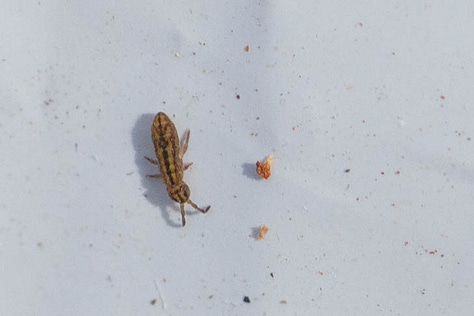
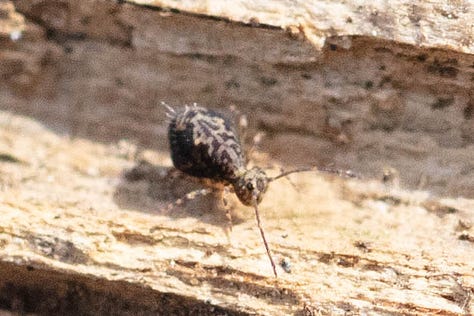
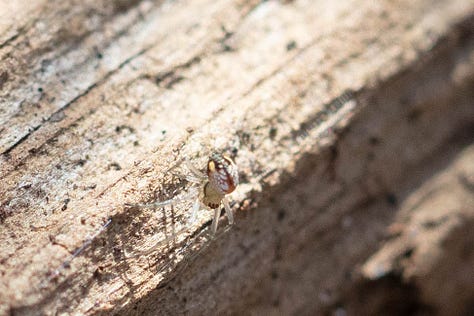
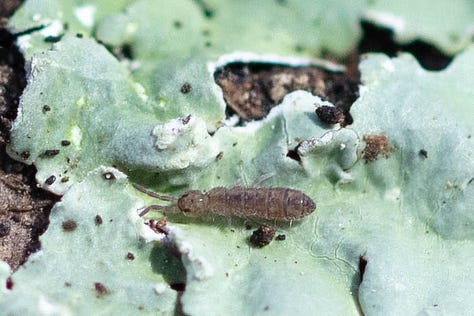
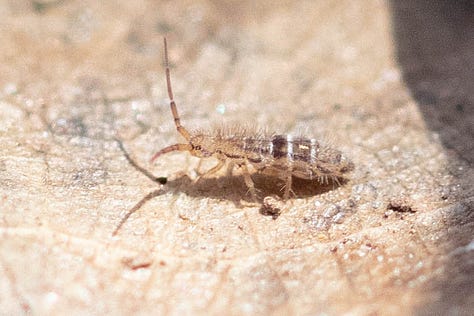

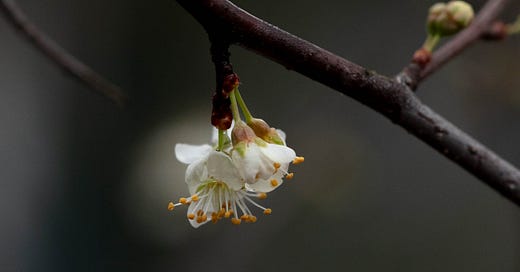


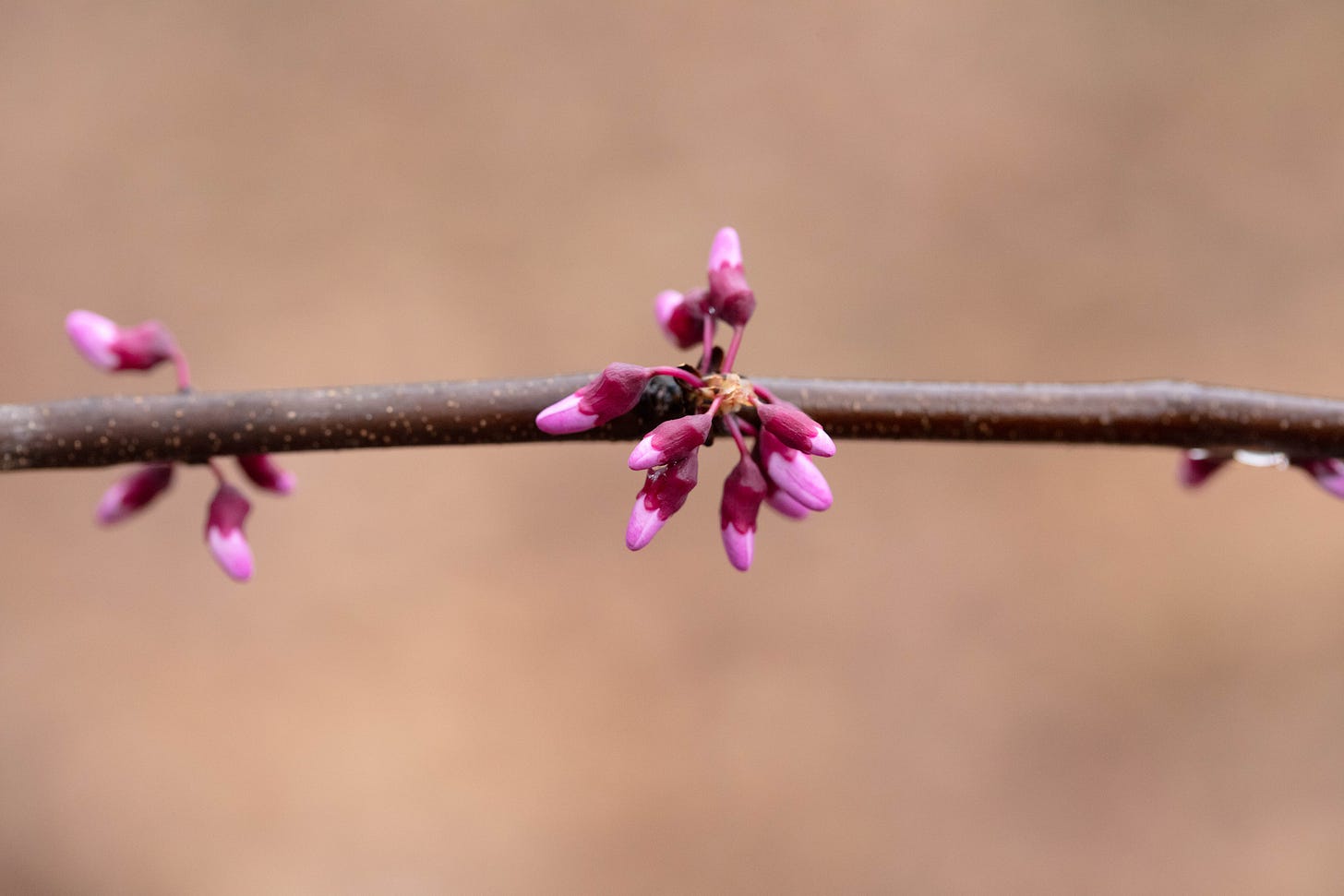


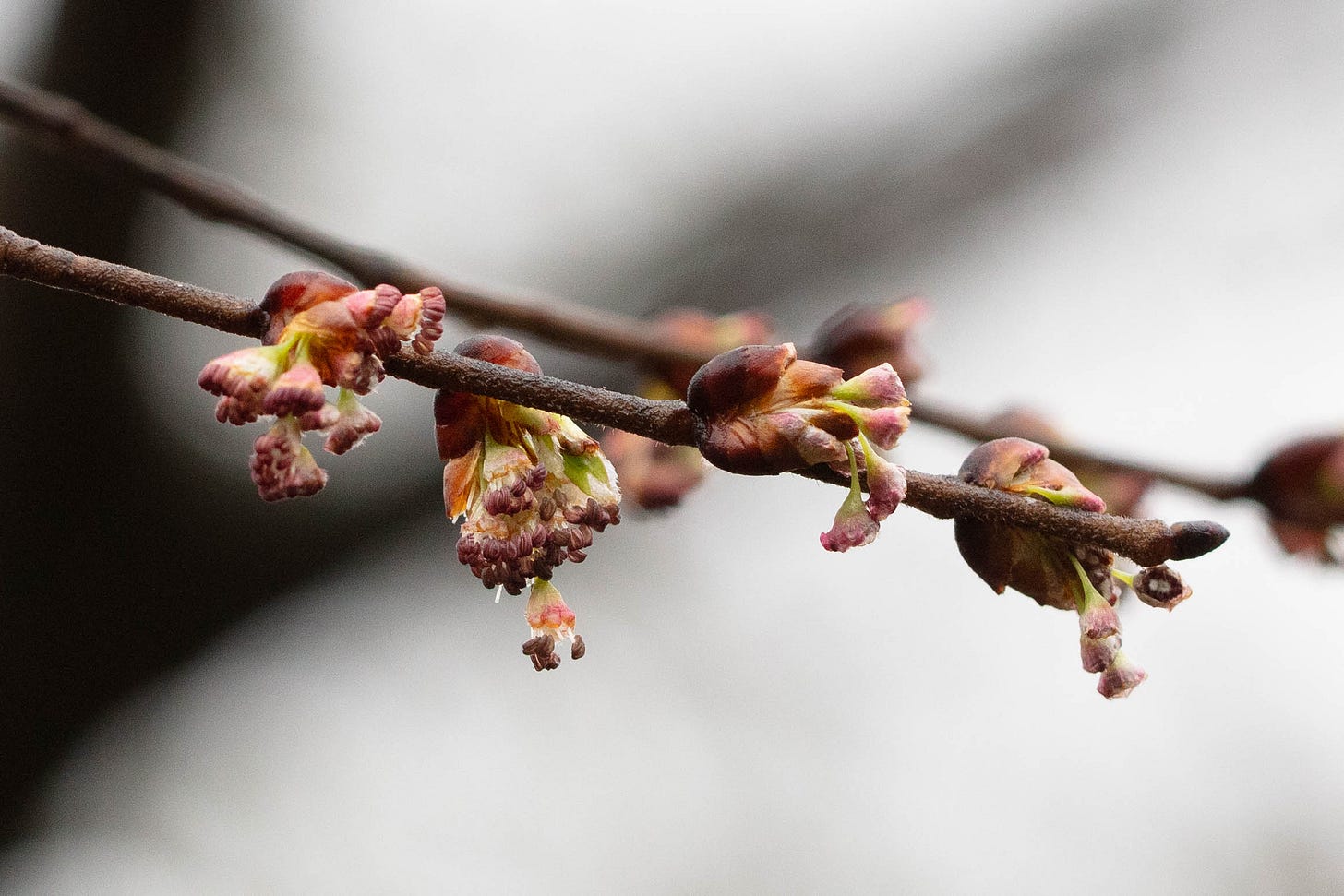
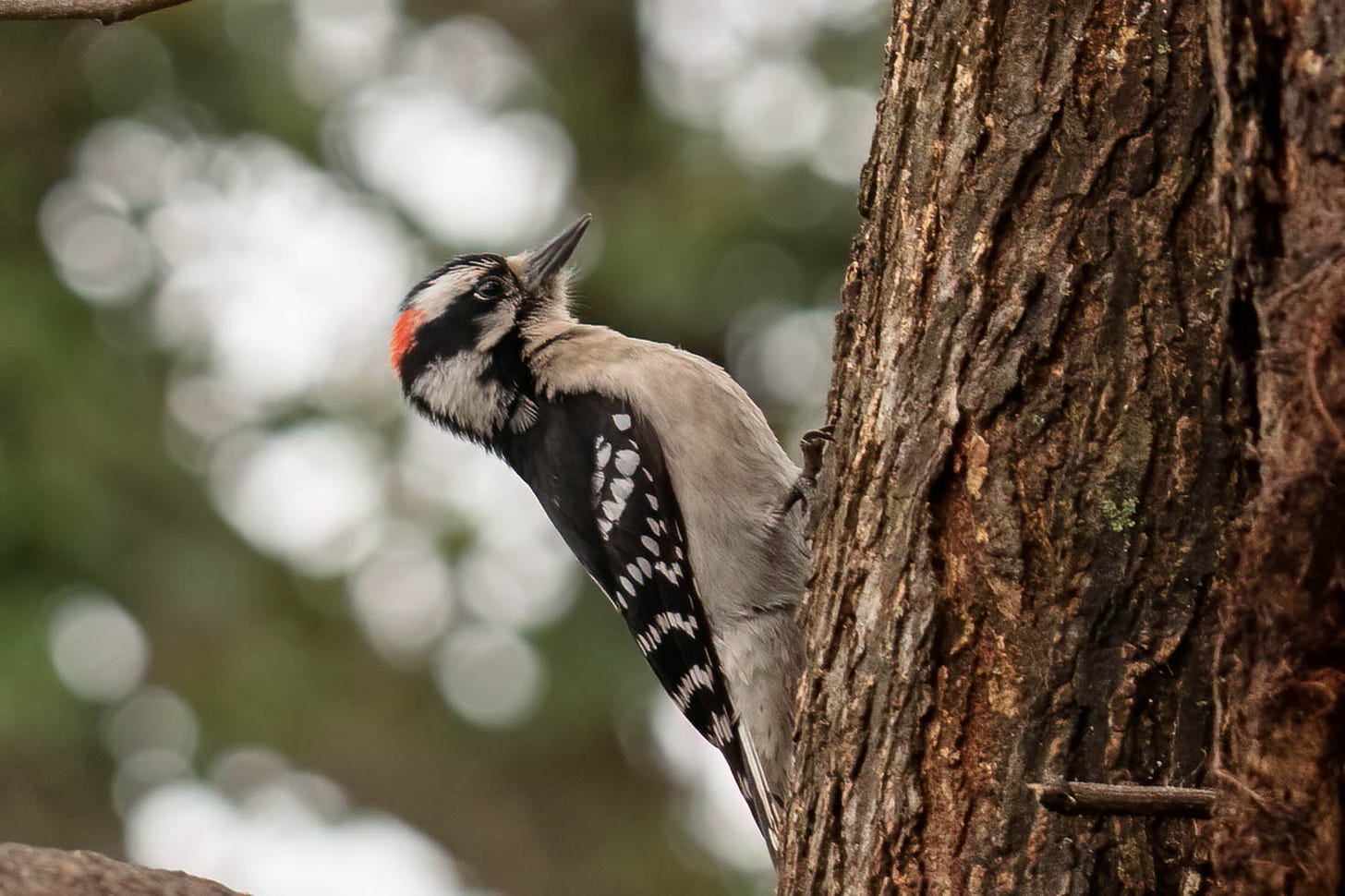
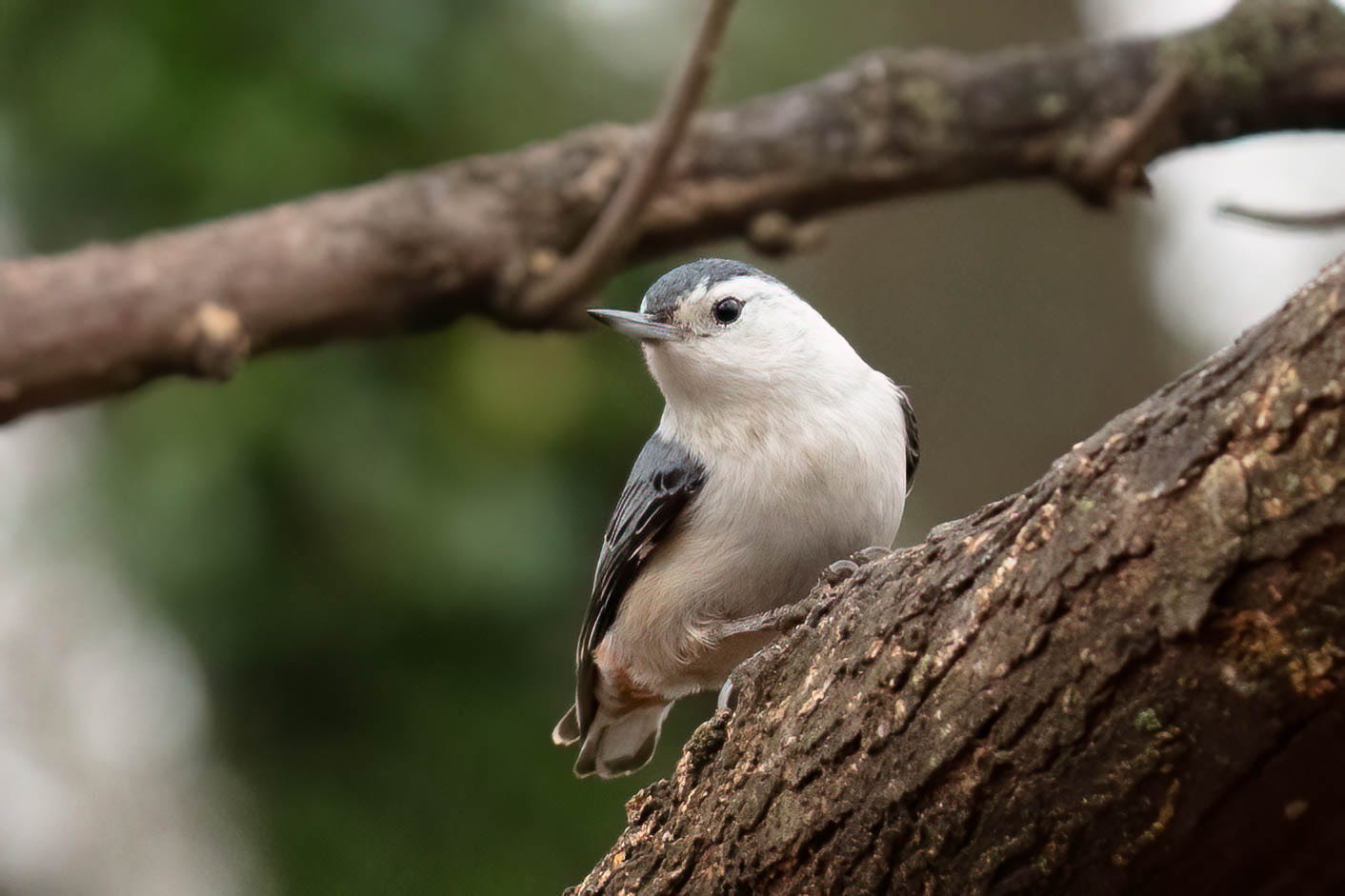

So beautiful. I noticed bluets blooming among a patch of moss (for the first time) during my morning dog walk.
What beauty in your backyard! I'd never looked at the blooms on an elm and that photo is stunning!